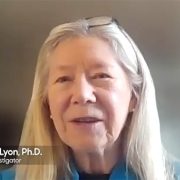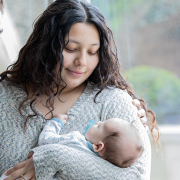Drs. Goyal and Tarini to lead Center for Translational Research

As CTR co-directors, Drs. Goyal and Tarini will lead the hospital’s mission to advance translational science, clinical research and community health.
Children’s National Hospital has appointed two nationally regarded leaders in pediatric research – Monika K. Goyal, M.D., M.S.C.E., and Beth A. Tarini, M.D., M.S., M.B.A. – to head its Center for Translational Research (CTR), a hub of high-impact scientific investigation that touches nearly every pediatric specialty.
As CTR co-directors, Drs. Goyal and Tarini will lead the hospital’s mission to advance translational science, clinical research and community health. They will begin their new roles on July 1.
Moving the field forward
“It is truly an honor to lead the CTR at such a pivotal moment in pediatric health,” said Dr. Goyal, an emergency medicine specialist and health services researcher. “I look forward to helping Children’s National lead the science on advancing health equity for the patients, families and communities we serve, both locally and nationally.”
As the largest of the six centers within the Children’s National Research Institute, CTR is pivotal in finding groundbreaking ways to improve health across pediatric medicine. Using a “bench to bedside” approach, the CTR faculty strives to seamlessly translate science from the laboratory bench to the patient’s bedside, moving pediatric medicine forward as expeditiously as possible to bring advances into the community.
“CTR is uniquely positioned to solve the biggest healthcare issues facing our pediatric patients,” said Dr. Tarini, a pediatrician and national leader in newborn screening research and policy. “I look forward to leading our diverse faculty of physicians and researchers as they leverage their front-line experience and innovative research to improve child health.”
Why we’re excited
Dr. Tarini joined Children’s National in 2018 and is currently the associate director for CTR. She was recently promoted to tenured professor of Pediatrics at George Washington University and has extensively studied policies to optimize the delivery of genetic services to families of newborns. In January, Dr. Tarini was appointed to a National Academies of Sciences, Engineering and Medicine Committee to examine the current landscape of newborn screening systems, processes and research in the United States. Dr. Tarini has obtained $10 million in federal and foundation funding, and she has served as president of the Society for Pediatric Research.
Dr. Goyal joined Children’s National in 2012. She is the inaugural endowed chair for Women in Science and Health and has served as the associate division chief for Academic Affairs and Research within the Emergency Department since 2018. She was recently promoted to tenured professor of Pediatrics and Emergency Medicine at George Washington University. Dr. Goyal is a nationally renowned equity science scholar and has published over 130 peer-reviewed manuscripts. She has secured more than $25 million in federal and foundation funding to address disparities in adolescent sexual health, pain management and firearm violence.
Children’s National leads the way
Catherine Bollard, M.D., M.B.Ch.B., interim chief academic officer, said she looks forward to seeing the advances in pediatric health guided by these two outstanding researchers. “By harnessing the immense talent within Children’s National for our search, we found two exceptional leaders in Drs. Goyal and Tarini,” Dr. Bollard said. “Their work promoting research that accelerates discovery across the continuum of bench, bedside and community has already made a significant impact.”









